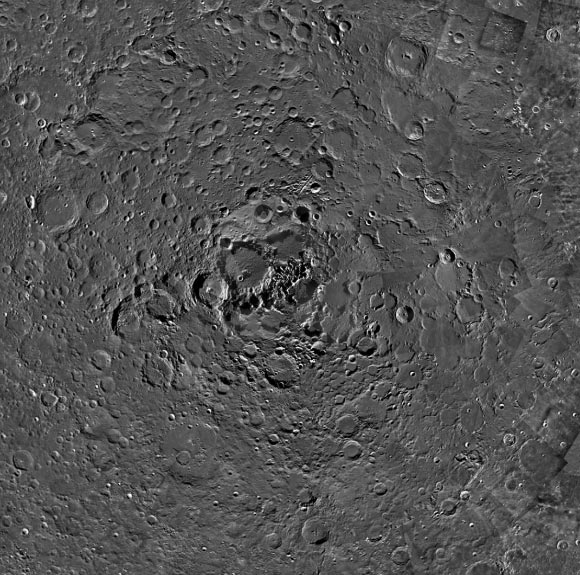This mosaic image obtained by ESA’s SMART-1 spacecraft shows the peaks and craters at the north pole of the Earth’s only natural satellite.

At the very center of this image from ESA’s SMART-1 orbiter is the north pole of the Moon. The image shows the characteristic craters of the Moon, present in all shapes and sizes. The largest in view is Rozhdestvenskiy, sandwiched between Hermite to the northeast and Plaskett to the southwest. Image credit: ESA / Space Exploration Institute / J. Manuel Fonseca, M. Costa & A. Mora, UNINOVA / B. Grieger & M. Almeida, ESA.
The SMART-1 spacecraft orbited the Moon from 2004 to 2006 collecting more than 30,000 images of small areas.
In order to create an image covering a huge region like this one, hundreds of these individual images had to be pieced together into a mosaic.
The biggest challenge in creating this image was the changing lighting conditions, according to ESA planetary researchers.
“Despite the dark side of the Moon misnomer, both sides of the Moon do experience night and day in the same way,” the said.
“The far side has days of two weeks just like the nearside and is dark only in the sense that it was unknown to humans before the arrival of space probes.”
At the lunar north pole, as is the case across all areas of the Moon, the Sun illuminates from different directions.
As the Sun travels across the lunar sky, new areas are illuminated and shadows spread and move. This means that many of the small images used for the mosaic are lit from different directions.
This is why faint squares can be found in the mosaic where two small images of different illumination butt up against one another.
“The overall effect however, was worth the labor, and the resulting image gives us a fresh perspective on our natural satellite.”







